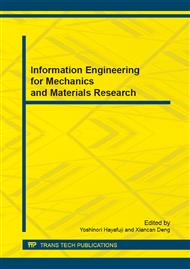[1]
ShiHan QIng, Operating System Security [M]. Bei-jing. Tsinghua University Press,(2012).
Google Scholar
[2]
JunLuo . Linux Operating System security enhancements and Implementation [D]. ChengDu: University of Electronic Science and Technology,(2006).
Google Scholar
[3]
Chris Wright and Crispin Cowan, James Morris, Linux Se-curity Module Framework, , Linux Symposium (2002).
Google Scholar
[4]
Sandhu R.S. Samar ati Access control: principle and practice IEEE Communications Magazine: 40-48.
Google Scholar
[5]
Martin-Flatin J P. A simple typology of distributed network management paradigms . Technical Report, Swiss Federal Institute of Technology, Switzerland, July, (1997).
Google Scholar
[6]
Bohoris C, Pavlou G, Liotta A. A Hybrid Approach to Net-work Performance Monitoring Based on Mobile Agents and CORBA[C] . Proc. of the4th International Workshop on Mo-bile Agents for Telecommunication Applications. Barce-lona, Spain: Springer, 2002.
DOI: 10.1007/3-540-36086-7_14
Google Scholar
[7]
Ankur Gupta. Network Management: Current Trends and Future Perspectives[J]. Journal of Network and Systems Management, (2006).
Google Scholar
[8]
Kleinrock, L. Queuing Systems, Volume Three: Computer Applications. New York: Wiley, (2004).
Google Scholar
[9]
Burns,A., and Wellings, A.: real-Time systems and Their Programming Languages, Reading, MA: Addison-Wesley, (1990).
Google Scholar
[10]
Boswell,W. Inside Windows Server 2003. Reading, Ma: Addison-Wesley, (2003).
Google Scholar
[11]
L Liedtke,J. Toward Real Microkernels., Communica-tions of the ACM, September (1996).
Google Scholar
[12]
Love,R. I/O Schedulers., Linux Journal, February (2004).
Google Scholar


